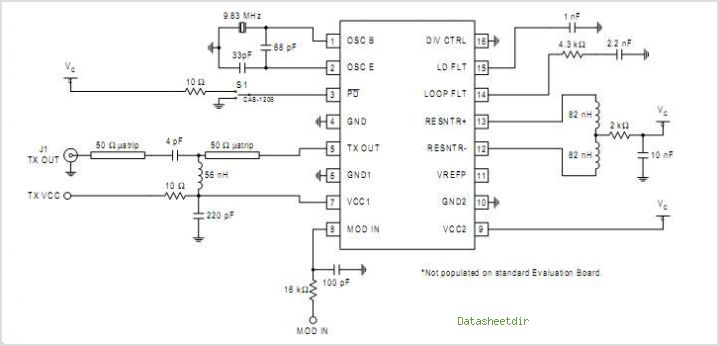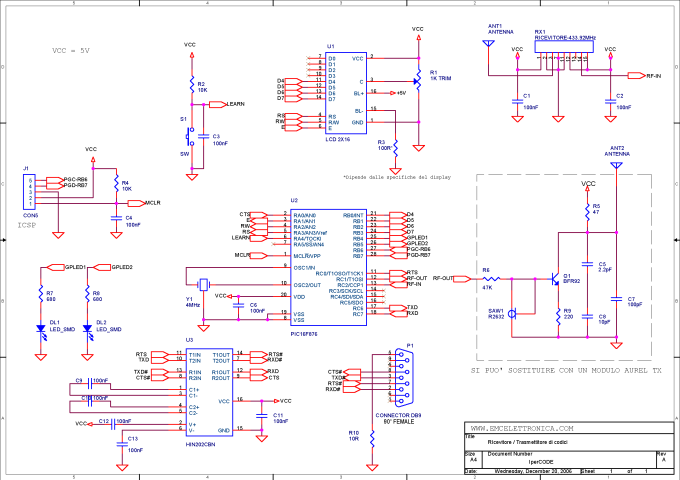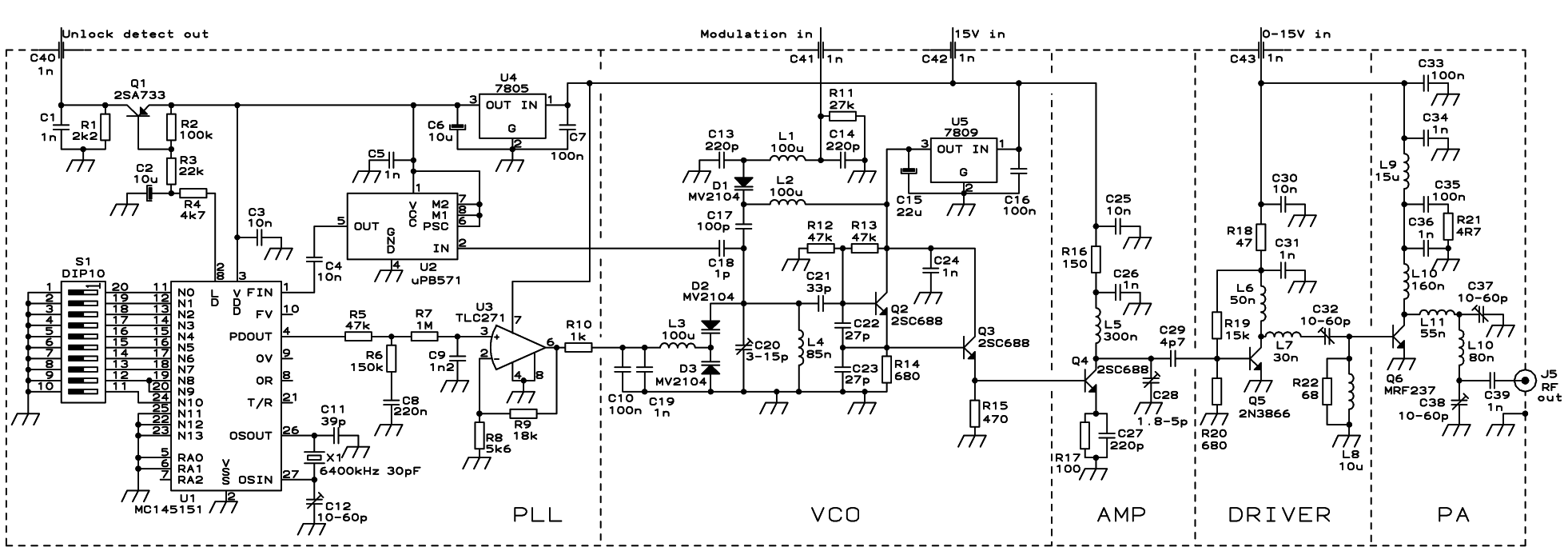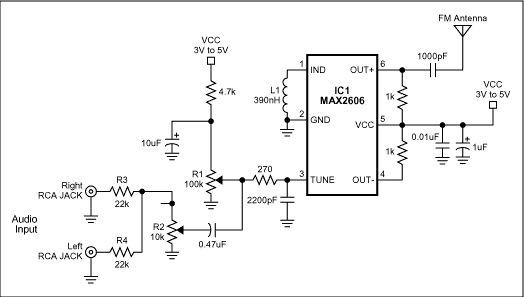
Easy Build FM Transmitter
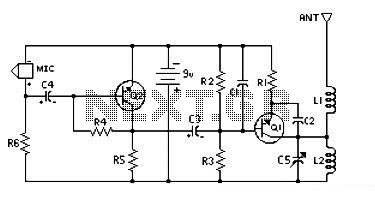
This is a low-cost and easy-to-build low-powered FM transmitter. The range of the FM transmitter is claimed to be about 300 feet when operating at a 9V supply. The range is said to increase to approximately 400 feet when powered by a 12V supply.
The FM transmitter circuit is designed for simplicity and affordability, making it accessible for hobbyists and those new to electronics. The primary components typically include a transistor for amplification, a few resistors, capacitors for filtering, and an inductor to form the necessary tank circuit for frequency modulation.
When powered at 9V, the transmitter operates efficiently, providing a range of approximately 300 feet, which is suitable for personal use or small events. Increasing the power supply to 12V enhances the circuit's performance, allowing for a maximum transmission range of about 400 feet. This increase in voltage improves the output power of the transmitter, which in turn enhances the signal strength and clarity.
To construct this transmitter, an oscillator circuit is usually implemented, which generates the RF signal. The modulation of the signal can be achieved by varying the input audio signal, typically from a microphone or an audio source. The modulated signal is then amplified by the transistor before being transmitted through an antenna, which can be a simple wire of appropriate length for the desired frequency.
The design may also incorporate additional features such as a low-pass filter to reduce harmonic distortion and improve signal quality, as well as tuning elements to allow for frequency adjustments. Overall, this low-powered FM transmitter serves as an excellent project for learning about radio frequency transmission and basic electronic circuit design.This is a low cost and easy build low powered FM transmitter. The range of the FM transmitter claimed about 300 feets when running at 9V supply. And the range claimed to be increased become about 400 feet when running it at 12V supply. Take.. 🔗 External reference
The FM transmitter circuit is designed for simplicity and affordability, making it accessible for hobbyists and those new to electronics. The primary components typically include a transistor for amplification, a few resistors, capacitors for filtering, and an inductor to form the necessary tank circuit for frequency modulation.
When powered at 9V, the transmitter operates efficiently, providing a range of approximately 300 feet, which is suitable for personal use or small events. Increasing the power supply to 12V enhances the circuit's performance, allowing for a maximum transmission range of about 400 feet. This increase in voltage improves the output power of the transmitter, which in turn enhances the signal strength and clarity.
To construct this transmitter, an oscillator circuit is usually implemented, which generates the RF signal. The modulation of the signal can be achieved by varying the input audio signal, typically from a microphone or an audio source. The modulated signal is then amplified by the transistor before being transmitted through an antenna, which can be a simple wire of appropriate length for the desired frequency.
The design may also incorporate additional features such as a low-pass filter to reduce harmonic distortion and improve signal quality, as well as tuning elements to allow for frequency adjustments. Overall, this low-powered FM transmitter serves as an excellent project for learning about radio frequency transmission and basic electronic circuit design.This is a low cost and easy build low powered FM transmitter. The range of the FM transmitter claimed about 300 feets when running at 9V supply. And the range claimed to be increased become about 400 feet when running it at 12V supply. Take.. 🔗 External reference
